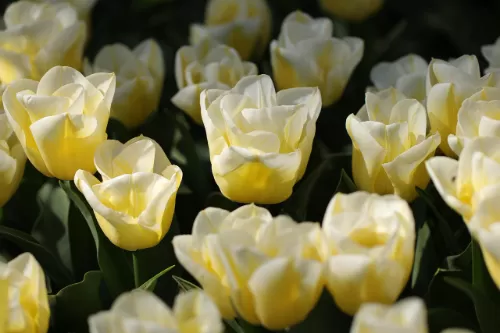

Click to Get Big Benefits

The Case for Going Native
Why choose native over the flashy imports from garden centers? Because native flowers are built for this land. They’ve evolved alongside the local climate, soil, and ecosystems. This means they don’t need much pampering. No special fertilizer cocktails. No fussing over water schedules. They’re hardy, resilient, and sustainable. What’s more, they support birds, bees, and butterflies in ways imported species simply can't. Want to make a real difference from your backyard? Grow what grows here naturally.
Black-Eyed Susan: The Golden Classic
If you’ve ever driven down a country road in July, chances are you’ve seen Black-Eyed Susans waving in the wind. With their golden yellow petals and dark chocolate centers, they’re cheerful, sturdy, and a symbol of American summer. Native to much of the U.S., they thrive in full sun and don’t mind poor soil. Pollinators adore them—especially native bees—and they’ll reseed themselves with gusto. Plant them once, and they’ll likely become a permanent part of your summer landscape.
Milkweed: Monarch Magnet
Few native flowers have gotten more well-earned attention lately than milkweed, and for good reason. This unassuming plant is the sole host for monarch butterfly caterpillars. No milkweed, no monarchs. It's that simple. Common milkweed, butterfly weed (which is bright orange and stunning), and swamp milkweed are all native varieties worth growing. They’re drought-tolerant, tough as nails, and bloom through summer. Add a few to your garden and watch the butterflies come calling—it’s like nature’s version of sending an open invite.
Wild Bergamot: Lavender With Attitude
Also known as bee balm, wild bergamot is a firecracker of a flower. Its wild, spiky blooms range from lavender to pink and attract everything from hummingbirds to hoverflies. It looks a little like a flower that had a good hair day in a wind tunnel. What’s not to love? Native to much of North America, it thrives in prairies, open woods, and gardens with decent sun. Bonus: it smells amazing. Crush a leaf and you’ll get a bright, minty scent that’s as refreshing as it is nostalgic.
Purple Coneflower: Tough, Tall, and Timeless
Echinacea purpurea, aka purple coneflower, is the elder statesman of native perennials. Upright, drought-resistant, and elegantly regal, it’s a favorite for gardeners and pollinators alike. Its rosy-purple petals radiate from a bristly orange cone, creating a kind of rugged beauty that fits into almost any landscape. Native to central and eastern North America, it’s perfect for layered garden beds or wildflower meadows. And when it goes to seed? Goldfinches will visit, turning your flower patch into a bird buffet.
Blanket Flower: A Summer Sunset in Bloom
Looking for bold color and zero drama? Say hello to the blanket flower. With fiery red and yellow petals, it blooms like a flame across your flower beds. Originally native to the Great Plains and parts of the Southwest, blanket flowers thrive in heat, wind, and poor soil—basically, the kinds of conditions most plants complain about. These guys just get tougher. They bloom all summer long, luring in bees and butterflies with their warm tones and abundant nectar.
A Garden That Gives Back
Planting native flowers is more than an aesthetic choice—it’s a form of quiet activism. Every bloom helps rebuild lost ecosystems, one yard at a time. You’re not just decorating; you’re restoring. Cities, suburbs, and even rural landscapes are losing native habitat at an alarming rate. But when homeowners, renters, and community gardens plant native, they create islands of refuge for insects, birds, and pollinators. It’s like patchwork healing—one milkweed, one bergamot, one wild bloom at a time.
Starting Small: Tips for Native Flower Newbies
Not ready to overhaul your yard into a prairie? No problem. Start with a corner. Pick three to five species native to your region (your state’s native plant society is a great resource) and give them a try. Most don’t need rich soil or fertilizer. Just sunlight and patience. Be ready for them to look a little “wild”—that’s the charm. These aren’t stiff, manicured roses; they’re free spirits. Let them sprawl, sway, and surprise you. Over time, you’ll find yourself growing more comfortable with that controlled chaos.
Where to Find Native Seeds and Plants
Skip the big box garden centers. Instead, look for native plant nurseries or regional seed suppliers. Local conservation groups often host native plant sales in spring and fall. Avoid anything labeled “wildflower mix” unless you know the source—it often includes non-native, invasive species. And check that the plants haven’t been treated with neonicotinoids, a pesticide deadly to bees. Ask questions, support small growers, and be part of a movement that’s bringing native flora back, bloom by bloom.
Conclusion
North American native flowers may not be exotic, but they are extraordinary. They tell a story of resilience, interconnection, and beauty born from the land itself. You don’t have to trek to a national park to witness their wonder. Just open your door, plant a few seeds, and watch the ecosystem respond. In a time when so much of nature feels far away, native flowers offer a way to bring it home—and let it thrive.

All News
Others
- Terms of use
- Privacy Policy